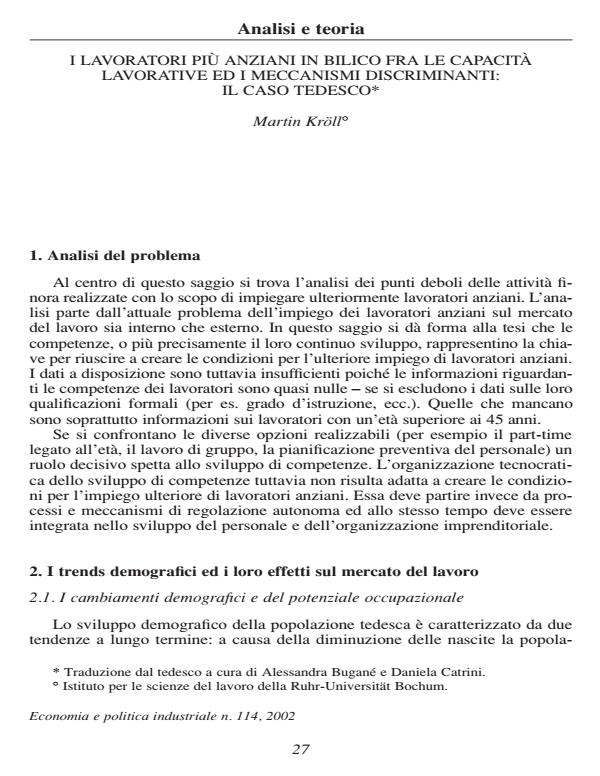I lavoratori più anziani in bilico fra le capacità lavorative ed i meccanismi discriminanti: il caso tedesco
Journal title ECONOMIA E POLITICA INDUSTRIALE
Author/s Martin Kroll
Publishing Year 2002 Issue 2002/114
Language Italian Pages 25 P. File size 112 KB
DOI
DOI is like a bar code for intellectual property: to have more infomation
click here
Below, you can see the article first page
If you want to buy this article in PDF format, you can do it, following the instructions to buy download credits

FrancoAngeli is member of Publishers International Linking Association, Inc (PILA), a not-for-profit association which run the CrossRef service enabling links to and from online scholarly content.
The central focus of this essay is an analysis of the weaknesses of the current structural options that aim to allow older employees to continue working. The point of departure of the analysis is a reappraisal of the questions arising from the employment of older people in the internal and external labour market. In the course of the investigation it shall become clear that the competencies, or rather, the lifelong development of competencies, constitutes the key problem in laying the foundations for the further employment of older workers. There is however insufficient data in this field of research, since other than formal qualifications scarcely any information about employees’ skills is available. Particularly in the case of those over the age of 45, one simply ‘fumbles about in the dark’. When comparing the various structural options (e.g. part-time work for older people, teamwork, HR planning for the future, etc.) competency development assumes a decisive role. Yet management of competency development in the technocratic sense proves unsuited to meet the requirements for the further employment of older employees. The organisation of competency development should rather be conceptualised as originating from the particular self-regulating processes and mechanisms in question and should simultaneously be integrated into the company’s human resource and organisational development.
Martin Kroll, I lavoratori più anziani in bilico fra le capacità lavorative ed i meccanismi discriminanti: il caso tedesco in "ECONOMIA E POLITICA INDUSTRIALE " 114/2002, pp , DOI: